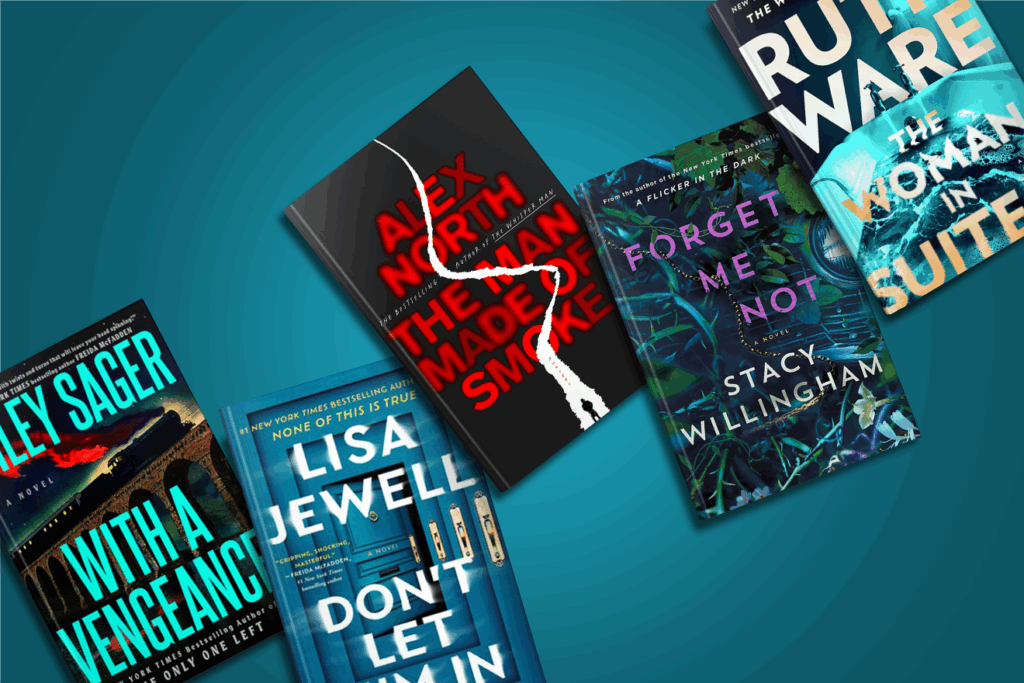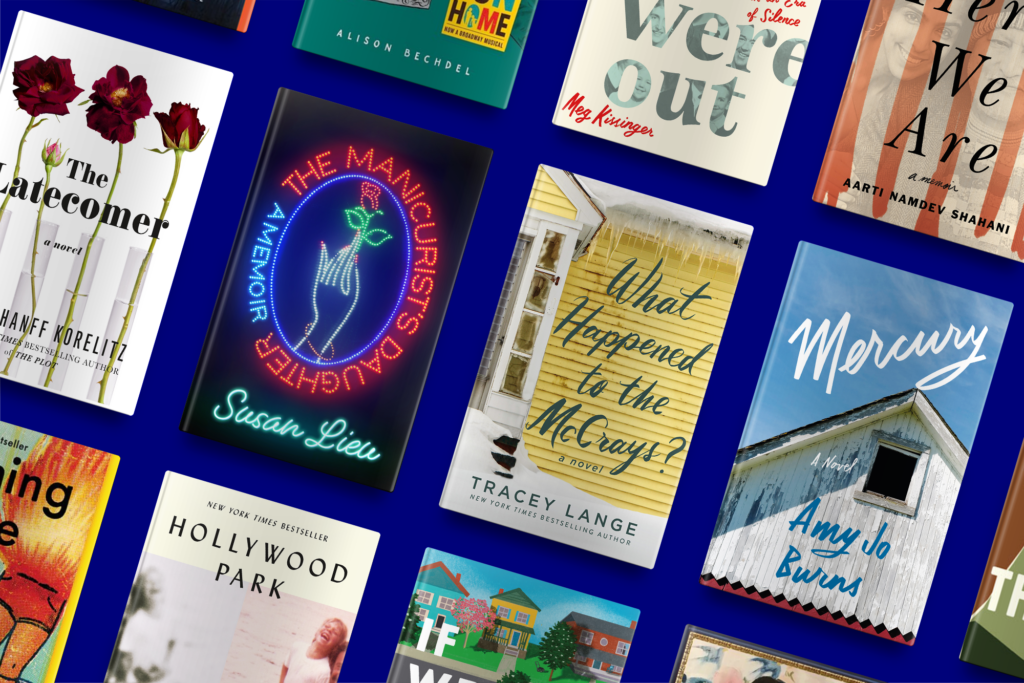Solving the unexplainable is a tale as old as time.
By Jessica Dukes
Mystery Fiction is a genre all its own, like Romance or Science Fiction. It has a well-defined story arc, heroes, villains, and plenty of excitement. Here’s how we define Mystery Fiction, a look at its history, and some popular types.
“Mystery” Definition
A mystery is simply an unsolved question and the attempt to answer it. In literature, this mystery is often a crime, but anything unexplainable can inspire a great mystery novel.
Like all genre fiction, Mystery follows a formula, one that readers expect. The thing that must happen: something unexplainable. It could be a crime, a disappearance, or the impossible arrival of something or someone. (Gillian Flynn’s Gone Girl checks several of these boxes.) Once the mystery is declared, an investigation begins. Clues and witnesses are gathered; suspects emerge. At some point, everything will go off the rails thanks to red herrings or last-minute alibis.
Eventually, the investigation takes a giant leap forward — whether it’s a crucial clue or a tortured confession — and, at last, the mystery is solved. But that’s not necessarily the end of the story. If a crime has been committed, the criminal needs to be caught. If someone disappeared, they need to be found. And, of course, all villains should receive the punishment they deserve.
Mysteries are typically told chronologically from the time the mystery is discovered to the instant it’s solved, but not always. Sometimes, the mystery is solved early in the novel, and the rest of the storyline is spent searching for the motive or the criminal, as in Tom Rob Smith’s Child 44. Whatever the timeline, all mystery novels create the same questions for the reader: Who is responsible for the mystery? What are the details of what happened? Why did this happen? If anyone deserves punishment, is justice served?
History of the Mystery
For as long as humans have been writing things down, we’ve been writing about crime and punishment — laws to rule societies and stories to inform our morals. Greek tragedian, Euripides, explores the significance of murder in Orestes (408 BC). Orestes faces execution after he takes the god Apollo’s advice and murders his own mother. Orestes’ attempts to get out of his death sentence pits the free will of men against the absolute power of gods. The mystery here: Will politicians catch Orestes, or will the gods protect him? The answer could tip the balance of power with world-shattering consequences.
More than 2,200 years later, Edgar Allen Poe’s short story, “The Murders in the Rue Morgue” (1841) marks the official beginning of the Mystery genre in literature. The first literary detective, C. Auguste Dupin, investigates a gruesome double murder by collecting clues and interrogating witnesses — techniques that influence every mystery that follows.
The first detective novel, Wilkie Collins’ The Moonstone (1868), soon follows. When a priceless Indian diamond is stolen, suspects are immediately identified and the investigation begins. The mystery isn’t so much who stole it, but how the crime happens.
In 1866 France, Émile Gaboriau becomes an early pioneer of the detective novel with his fictional icon Detective Monsieur Lecoq. The character is based on a real person — a criminal who became a police officer and started solving the crimes he once would have committed.
Readers meet mystery’s superstar in 1887, when Sir Arthur Conan Doyle debuts Sherlock Holmes and his indispensable sidekick, Dr. Watson, in A Study in Scarlet. Holmes is unique in that he’s eccentric, difficult to work with, and confesses to having a drug problem. But any issues with his personality take a back seat to his genius powers of deduction, knowledge of forensics, talents with disguise, and the fact that he can win a fist fight. No fictional detective has been so replicated or admired since.
The 1920 and 30s are considered the Golden Age of Mystery for the blockbuster authors who emerged. Agatha Christie’s The Mysterious Affair at Styles (1920) introduces the world to an investigator second only to Holmes: Detective Hercule Poirot. Dorothy L. Sayers soon follows with another unforgettable detective, when Lord Peter Wimsey makes his debut in Whose Body? (1923).
In the United States, the hardboiled mystery explodes on the scene in 1920, when H. L. Mencken launches Black Mask magazine, publishing serial stories from previously unknown pulp fiction writers, launching their careers. Enter Dashiell Hammett’s Sam Spade, Raymond Chandler’s Philip Marlowe, and dozens of other street-wise investigators who battle organized crime bosses and corrupt police departments in their cynical attempts to get justice in a cruel world.
In the Golden Age, the mystery genre is so popular it even breaks into children’s literature. The Hardy Boys (1927) and Nancy Drew (1930) bring the excitement of amateur sleuthing to the next generation of readers, ensuring the popularity of mysteries for years to come.
Today, the genre remains a cornerstone of the publishing industry, and readers can always find a good mystery on any bestseller list.
Types of Mysteries
The mystery genre is immense, with many sub-genres (and sub-sub genres) within. Here are the biggest ones.
Detective Fiction is the category everyone most identifies with mysteries. This broad sub-genre includes detectives like James Patterson’s Michael Bennett; professionals like Janet Evanovich’s bounty hunter, Stephanie Plum; or amateur sleuths like Nancy Drew, who dive into clues and solve a mystery.
Thrillers are more plot-driven, action-packed, and full of heart-stopping moments than most other mysteries. Alex Michaelides’ The Silent Patient is a psychological thriller that follows a psychotherapist down a twisted rabbit hole, as he tries to determine why his famous artist patient, who won’t speak, killed her husband in a most gruesome way.
True Crime has been popular for years, thanks to newspapers’ dramatic reporting of crimes and their aftermath. When Truman Capote’s In Cold Blood was published in 1966, it formalized the narrative style so popular today. As with Michelle McNamara’s I’ll Be Gone in the Dark: One Woman’s Obsessive Search for the Golden State Killer, the inspiration for True Crime is a real-life mystery.
Cozy or Domestic Mysteries are most often solved by amateur sleuths, and the crimes happen off the page, making them far less gruesome. Unexpected characters help solve crimes, like Koko the cat in Lilian Jackson Braun’s The Cat Who Could Read Backwards. Familiar settings such as bookstores, libraries, and bakeries also feature prominently.
Supernatural or Paranormal Mysteries investigate the appearance of ghosts, UFOs, or other unexplainable mysteries. In Jess Kidd’s Things In Jars, Detective Devine must find a missing girl who has supernatural powers, before others capture and sell her first.
Historical Mysteries bring the past and its mysteries to life. Ellis Peters’ A Morbid Taste for Bones, the first book in the much beloved Cadfael Chronicles series, follows a Welsh Benedictine monk in the 12th century as he tries to solve a murder tied to holy remains.
Heists and Capers are fun to read because they’re almost always told from the point of view of the criminal. Donald Westlake’s The Hot Rock, an exciting heist classic, follows a team of amateur but determined emerald thieves.



